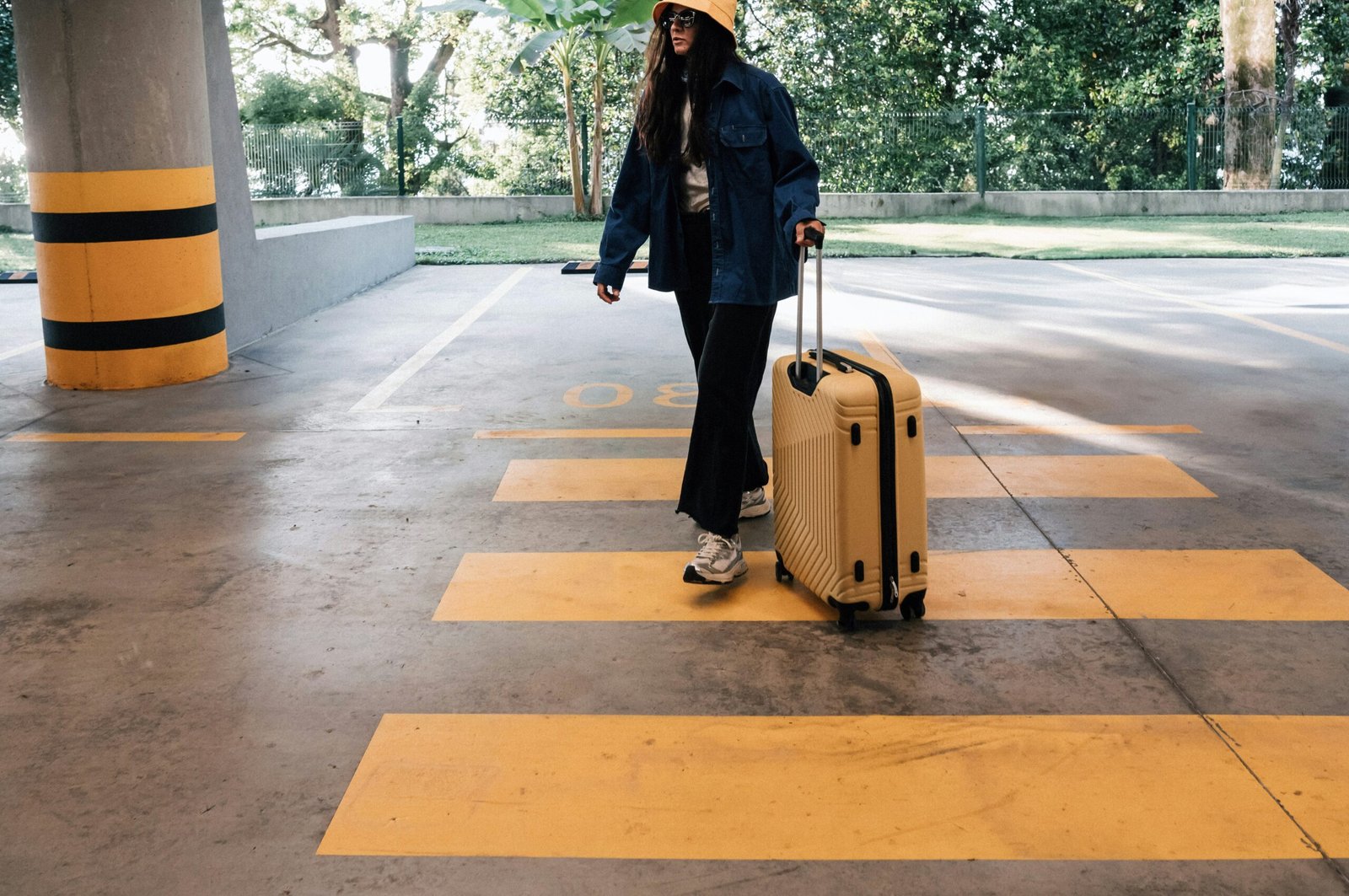Best Holiday Deals
Top-rated gifts that will arrive on time
Rudy Giuliani filed for bankruptcy Thursday, days after a jury ordered him to pay a staggering $148 million to two ex-Georgia election workers Giuliani baselessly accused of committing fraud in the 2020 election.
Giuliani’s Chapter 11 petition, filed in U.S. bankruptcy court in New York, lists between $1 million and $10 million in assets and between $100 million and $500 million in liabilities, the filing shows.
For months, the former New York City mayor has appeared to experience a cash crunch as he defended against increasing legal troubles in part for spearheading former President Trump’s efforts to overturn the 2020 election results in court.
Best Holiday Deals
Top-rated gifts that will arrive on time
But the bankruptcy filing was spurred by a jury’s verdict last week ordering him to pay about $148 million to former Georgia election workers Ruby Freeman and Shaye Moss following a four-day civil defamation trial.
Giuliani vowed to appeal the verdict, calling the amount “absurd.” But at Freeman and Moss’s request, the judge on Wednesday ordered the judgment be immediately enforced.
Filing for bankruptcy protections is likely to lead to a pause in the civil lawsuits Giuliani faces, including the election workers’ case, although Giuliani can’t use bankruptcy to discharge debts for “willful and malicious” conduct. His criminal case in Georgia would still move forward.
“The filing should be a surprise to no one,” Ted Goodman, political advisor to Giuliani, said in a statement.
“No person could have reasonably believed that Mayor Rudy Giuliani would be able to pay such a high punitive amount,” Goodman added. “Chapter 11 will afford Mayor Giuliani the opportunity and time to pursue an appeal, while providing transparency for his finances under the supervision of the bankruptcy court, to ensure all creditors are treated equally and fairly throughout the process.”
Giuliani’s bankruptcy petition estimates he owes the largest amount known to the two women and has a total of less than 50 creditors.
The list of Giuliani’s largest creditors is a who’s who of people and groups that are actively suing him.
It includes Hunter Biden, the president’s son, who sued Giuliani over his involvement in Biden’s laptop scandal; voting-equipment companies Smartmatic and Dominion, which both sued Giuliani for defamation over his 2020 election claims; Giuliani’s ex-lawyers, who are suing him over unpaid legal bills; a Staten Island, N.Y. supermarket employee who sued Giuliani after being arrested for allegedly assaulting the former mayor; and one of Giuliani’s former employees, who accused him of sexual assault.
Giuliani also indicated in court papers that he owes about $724,000 in federal income taxes and about $265,000 in state income taxes.
Some of the details of Giuliani’s financial troubles were previously known.
His lawyers have publicly noted a cash crunch, and Giuliani’s attorney in the recent election workers’ trial said the requested damages could mark the “end of Mr. Giuliani” and be the “civil equivalent of the death penalty.”
And in the ongoing lawsuit from the supermarket employee, court filings show Giuliani has taken to representing himself.
Giuliani also still faces criminal charges in Georgia for his efforts leading Trump’s legal team after the 2020 election. After being charged, he turned to Trump for help financially. Trump hosted a fundraiser for his former lawyer weeks later.
In July, Giuliani put his New York apartment up for sale for $6.5 million. The price was lowered by $400,000 in late October, the listing shows.
Updated 3:18 p.m.
Court Battles, Business, Georgia Rudy Giuliani filed for bankruptcy Thursday, days after a jury ordered him to pay a staggering $148 million to two ex-Georgia election workers Giuliani baselessly accused of committing fraud in the 2020 election. Giuliani’s Chapter 11 petition, filed in U.S. bankruptcy court in New York, lists between $1 million and $10 million in assets and…

America’s job market is facing an unprecedented crisis—and nowhere is this more painfully obvious than at Harvard, the world’s gold standard for elite education. A stunning 25% of Harvard’s MBA class of 2025 remains unemployed months after graduation, the highest rate recorded in university history. The Ivy League dream has become a harsh wakeup call, and it’s sending shockwaves across the professional landscape.

For decades, a Harvard diploma was considered a golden ticket. Now, graduates send out hundreds of résumés, often from their parents’ homes, only to get ghosted or auto-rejected by machines. Only 30% of all 2025 graduates nationally have found full-time work in their field, and nearly half feel unprepared for the workforce. “Go to college, get a good job“—that promise is slipping away, even for the smartest and most driven.
Applicant tracking systems (ATS) and AI algorithms have become ruthless gatekeepers. If a résumé doesn’t perfectly match the keywords or formatting demanded by the bots, it never reaches human eyes. The age of human connection is gone—now, you’re just a data point to be sorted and discarded.
AI screening has gone beyond basic qualifications. New tools “read” for inferred personality and tone, rejecting candidates for reasons they never see. Worse, up to half of online job listings may be fake—created simply to collect résumés, pad company metrics, or fulfill compliance without ever intending to fill the role.
It’s not just Harvard grads who are hurting. Entry-level roles demand years of experience, unpaid internships, and portfolios that resemble a seasoned professional, not a fresh graduate. A bachelor’s degree, once the key to entry, is now just the price of admission. Overqualified candidates compete for underpaid jobs, often just to survive.
One Harvard MBA described applying to 1,000 jobs with no results. Companies, inundated by applications, are now so selective that only those who precisely “game the system” have a shot. This has fundamentally flipped the hiring pyramid: enormous demand for experience, shrinking chances for new entrants, and a brutal gauntlet for anyone not perfectly groomed by internships and coaching.
The cost is more than financial—mental health and optimism are collapsing among the newest generation of workers. Many come out of elite programs and immediately end up in jobs that don’t require degrees, or take positions far below their qualifications just to pay the bills. There’s a sense of burnout before careers even begin, trapping talent in a cycle of exhaustion, frustration, and disillusionment.
What’s really broken? The culture of hiring itself. Companies have traded trust, mentorship, and relationships for metrics, optimizations, and cost-cutting. Managers no longer hire on potential—they rely on machines, rankings, and personality tests that filter out individuality and reward those who play the algorithmic game best.
AI has automated the very entry-level work that used to build careers—research, drafting, and analysis—and erased the first rung of the professional ladder for thousands of new graduates. The result is a workforce filled with people who know how to pass tests, not necessarily solve problems or drive innovation.
Up to half of all listings for entry-level jobs may be “ghost jobs”—positions posted online for optics, compliance, or future needs, but never intended for real hiring. This means millions of job seekers spend hours on applications destined for digital purgatory, further fueling exhaustion and cynicism.
Despite the headlines, the new class of unemployed graduates is not lazy or entitled—they are overqualified, underleveraged, and battered by a broken process. Harvard’s brand means less to AI and ATS systems than the right keyword or résumé format. Human judgment has been sidelined; individuality is filtered out.

Unless companies rediscover the value of human potential, mentorship, and relationships, the job search will remain a brutal numbers game—one that even the “best and brightest” struggle to win. The current system doesn’t just hurt workers—it holds companies back from hiring bold, creative talent who don’t fit perfect digital boxes.
Key Facts:
If you’ve felt this struggle—or see it happening around you—share your story in the comments. And make sure to subscribe for more deep dives on the reality of today’s economy and job market.
This is not just a Harvard problem. It’s a sign that America’s job engine is running on empty, and it’s time to reboot—before another generation is locked out.

Nearly 9 million Americans now live outside the United States—a number that rivals the population of several states and signals a profound shift in how people view the American dream. This mass migration isn’t confined to retirees or the wealthy. Thanks to remote work, digital nomad visas, and mounting pressures at home, young professionals, families, and business owners are increasingly joining the ranks of expats.

Living in the US has become increasingly expensive. Weekly grocery bills topping $300 are not uncommon, and everyday items like coffee and beef have surged in price over the last year. Rent, utilities, and other essentials also continue to climb, leaving many Americans to cut meals or put off purchases just to make ends meet. In contrast, life in countries like Mexico or Costa Rica often costs just 50–60% of what it does in the US—without sacrificing comfort or quality.
America’s health care system is a major trigger for relocation. Despite the fact that the US spends more per person on health care than any other country, millions struggle to access affordable treatment. Over half of Americans admit to delaying medical care due to cost, with households earning below $40,000 seeing this rate jump to 63%. Many expats point to countries such as Spain or Thailand, where health care is both affordable and accessible, as a major draw.

Public safety issues—especially violent crime and gun-related incidents—have made many Americans feel unsafe, even in their own communities. The 2024 Global Peace Index documents a decline in North America’s safety ratings, while families in major cities often prioritize teaching their children to avoid gun violence over simple street safety. In many overseas destinations, newly arrived American families report a significant improvement in their sense of security and peace of mind.
US tax laws extend abroad, requiring expats to file annual returns and comply with complicated rules through acts such as FATCA. For some, the burden of global tax compliance is so great that thousands relinquish their US citizenship each year simply to escape the paperwork and scrutiny.
Remote work has unlocked new pathways for Americans. Over a quarter of all paid workdays in the US are now fully remote, and more than 40 countries offer digital nomad visas for foreign professionals. Many Americans are leveraging this opportunity to maintain their US incomes while cutting costs and upgrading their quality of life abroad.

The mass departure of nearly 9 million Americans reveals deep cracks in what was once considered the land of opportunity. Escalating costs, inaccessible healthcare, safety concerns, and relentless bureaucracy have spurred a global search for better options. For millions, the modern American dream is no longer tied to a white-picket fence, but found in newfound freedom beyond America’s borders.

Hollywood is bracing for a pivotal comeback, and for movie lovers, it’s the kind of shake-up that could redefine the very culture of cinema. With the freshly merged Paramount-Skydance shaking up its strategy, CEO David Ellison’s announcement doesn’t just signal a change—it reignites the passion for moviegoing that built the magic of Hollywood in the first place.

Fans and insiders alike have felt the itch for more event movies. For years, streaming promised endless options, but fragmented attention left many longing for communal spectacle. Now, with Paramount-Skydance tripling its film output for the big screen, it’s clear: studio leaders believe there’s no substitute for the lights, the hush before the opening credits, and the collective thrill of reacting to Hollywood’s latest blockbusters. Ellison’s pivot away from streaming exclusives taps deep into what unites cinephiles—the lived experience of cinema as art and event, not just content.
On the financial front, the numbers are as electrifying as any plot twist. After years of doubt, the box office is roaring. AMC, the world’s largest theater chain, reports a staggering 26% spike in moviegoer attendance and 36% revenue growth in Q2 2025. That kind of momentum hasn’t been seen since the heyday of summer tentpoles—and it’s not just about more tickets sold. AMC’s strategy—premium screens, with IMAX and Dolby Cinema, curated concessions, and branded collectibles—has turned every new release into an event, driving per-customer profits up nearly 50% compared to pre-pandemic norms.
Forget the gloom of endless streaming drops; when films like Top Gun: Maverick, Mission: Impossible, Minecraft, and surprise hits like Weapons and Freakier Friday draw crowds, the industry—and movie fans—sit up and take notice. Movie-themed collectibles and concession innovations, from Barbie’s iconic pink car popcorn holders to anniversary tie-ins, have made each screening a moment worth remembering, blending nostalgia and discovery. The focus: high-impact, shared audience experiences that streaming can’t replicate.
Yes, streaming is still surging, but the tide may be turning. The biggest franchises, and the biggest cultural events, happen when audiences come together for a theatrical release. Paramount-Skydance’s shift signals to rivals that premium storytelling and box office spectacle are again at the center of Hollywood value creation. The result is not just higher profits for exhibitors like AMC, but a rebirth of movie-going as the ultimate destination for fans hungry for connection and cinematic adventure.

As PwC and others warn that box office totals may take years to fully catch up, movie lovers and industry leaders alike are betting that exclusive theatrical runs, enhanced viewing experiences, and fan-driven engagement are the ingredients for long-term recovery—and a new golden age. The Paramount-Skydance play is more than a business move; it’s a rallying cry for the art of the theatrical event. Expect more big bets, more surprises, and—finally—a long-overdue renaissance for the silver screen.
For those who believe in the power of cinema, it’s a thrilling second act—and the best seat in the house might be front and center once again.


Diddy Wakes Up to Knife in Prison Attack


Harvard Grads Jobless? How AI & Ghost Jobs Broke Hiring


After Party: Festival Winner for Best Romantic Short


Camp Wackapoo – Rise of Glog Takes Center Stage


Francisco Ramos Takes Top Mockumentary Award at Houston Comedy Film Festival


Mamdani’s Victory Triggers Nationwide Concern Over New York’s Future


Trump’s $2,000 Tariff Dividend Plan: Who Gets Paid?


50-Year Mortgages: A Game Changer or a Debt Trap?